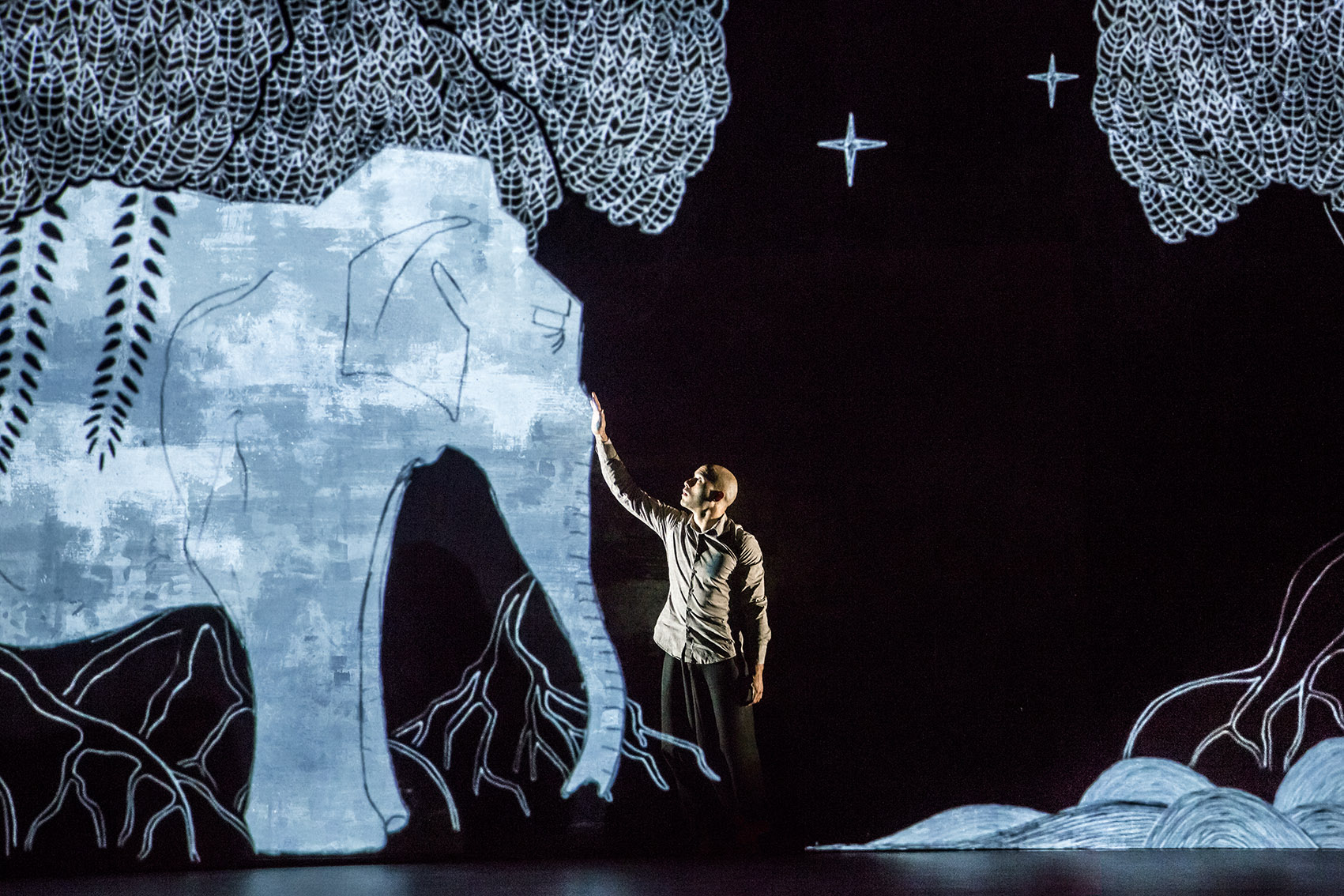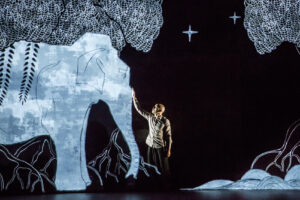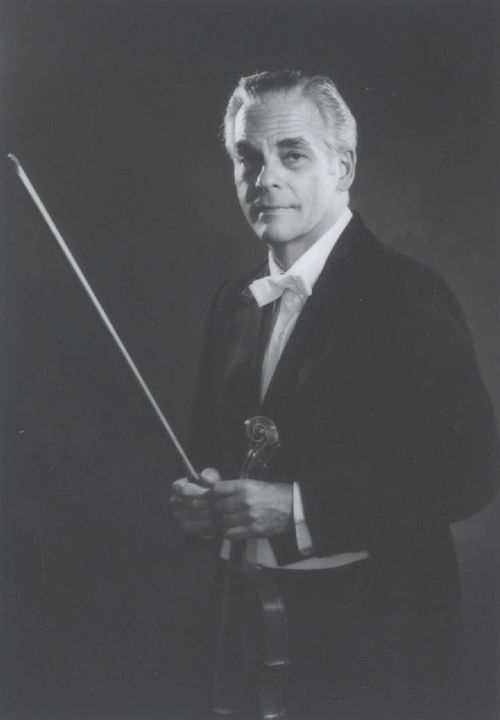Alastair Macaulay: This artist ticks all the boxes
balletThe former NY Times chief dance critic reviews Choto Desh for slippedisc.com:
by Alastair Macaulay
At the Queen Elizabeth Hall February 9-10. Then touring the U.K. and Uzbekistan.
When I say that Akram Khan ticks all the boxes, I mean it both cynically and as a testament to his diversity. He’s British Asian, both by birth and as a dance artist. He has developed an impressive record for over twenty years of creativity both in the traditional Indian dance genre of Kathak and in the Western modern dance idiom developed here in Britain. You can see why both arts funding people and private patrons of the performing arts bend over to cultivate him. He has become a growth industry.
He has been a star dancer, internationally admired as a Kathak virtuoso. In 2008-09, he collaborated in a modern-dance duet with none other than Juliette Binoche; his c.v. also includes the names Hanif Kureishi and Kylie Minogue, as well as the 2012 London Olympics. He has made three ballets for English National Ballet, the second of which, his rethink of “Giselle” (2016), has been toured with international acclaim (and some controversy).
This weekend at the Queen Elizabeth Hall brought a revival of his “Chotto Desh”, an hour-long adaptation of “Desh” (“Homeland”), the 2011 narrative solo Khan made for himself: like that, “Chotto Desh” – in which the principal role of “Akram” is now danced by a younger man – reminds us that Khan’s versatility includes “Akram”, the star who tells his own autobiography as a parable for our times; Khan the family-friendly dance-theatre storyteller; Khan the adorably gesticulating mime artist; and Khan the remarkably conventional and ingratiating entertainer. “Chotto Desh” tells the tale of Akram the boy artist, the Asian Briton whose abundant energy realises itself in various kinds of movement while failing to conform with his father’s hopes. “Chotto Desh”, aimed at audiences from seven years old and upwards, encourages us to believe that we, too, can become importantly creative artists if we pursue our own inner missions. Hail Akram!
If you’ve seen how unorthodox some of Khan’s early choreography was, you can’t help finding his versatility bewildering and at times dismaying. His English National Ballet “Creature” (2021) – a clumsy hybrid of the Frankenstein and Woyzeck stories – abounded in that worst cliché of expressionism, the silent scream. And much of the mime with which “Akram” opens “Chotto Desh” is over-emphatic, repeated, and cute in the manner of Marcel Marceau, the globally renowned but maddeningly exaggerated mime performer of the last century. Gestures keep being meted out four times over, or alternately to the right and to the left, again and again, all with super-bright eyes and winsome intentions. Jocelyn Pook’s music (taped) keeps falling into safely formulaic metrical patterns.
But whereas “Creature” was just a mess that grew only worse, “Chotto Desh” moves on from its disappointingly cute start to become both poetic and enchanting. Part of this is achieved by animation: the protagonist “Akram” journeys through black-and-white two-dimensional forests and rivers, escaping serpents and crocodiles and storms while pursuing butterflies. (Tim Yip is credited with the original visual design, YeastCulture with original visual animation. Sue Buckmaster has directed and adapted.)
And when “Akram” is seen again back at home, Khan’s portrait of the boy becomes wonderful and psychologically compelling. This boy artist is a loner in his room: he’s incoherently possessed by different drives he can’t control or suppress, and he loves the father who keeps trying to impose conventionality upon him. Physically, he no longer just gesticulates; he’s working through sequences of modern dance, boxing, martial arts, and Kathak. And psychologically he’s working through his various impulses of artistic creativity, of the social pressures upon an immigrant Bangladeshi family, and more. “Akram” is no longer cute or obvious; he is complex, subtle, an artist in the making.







Comments